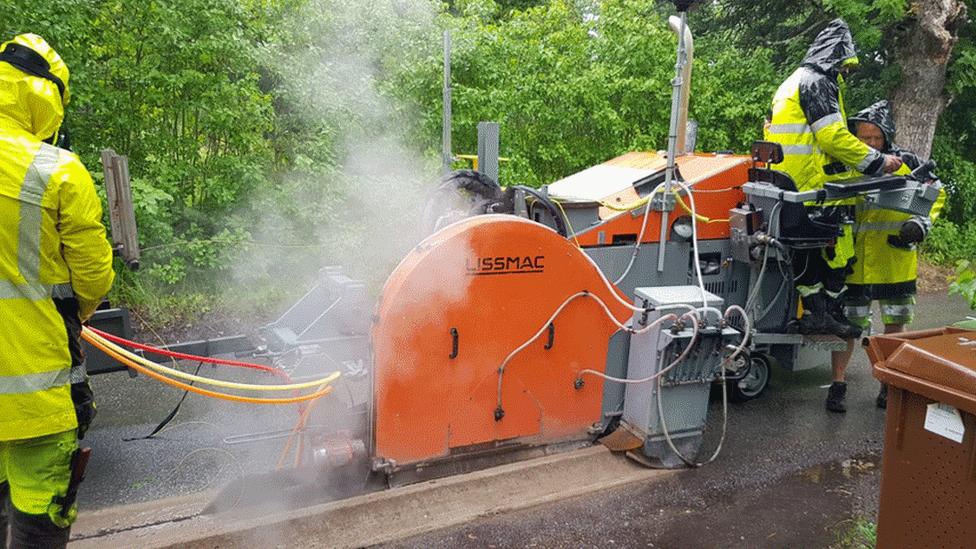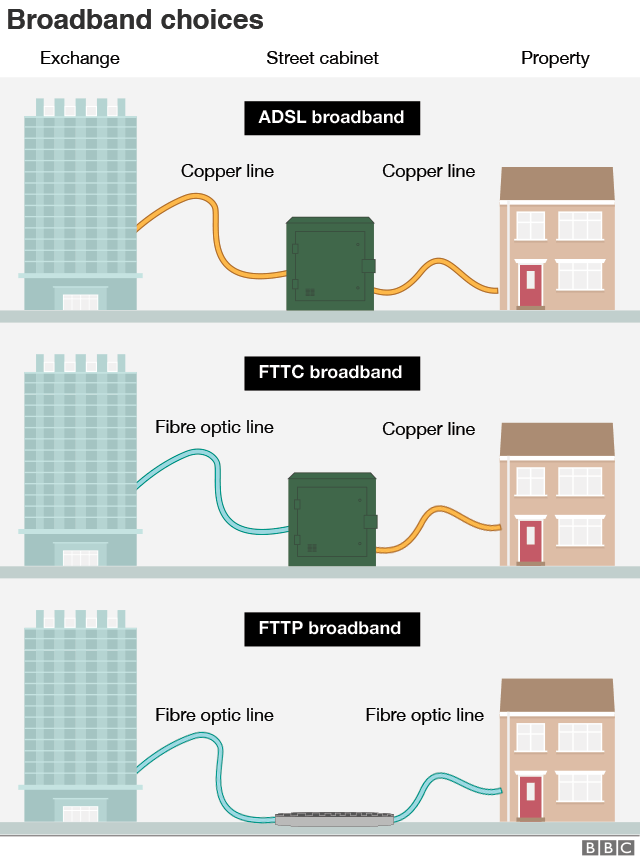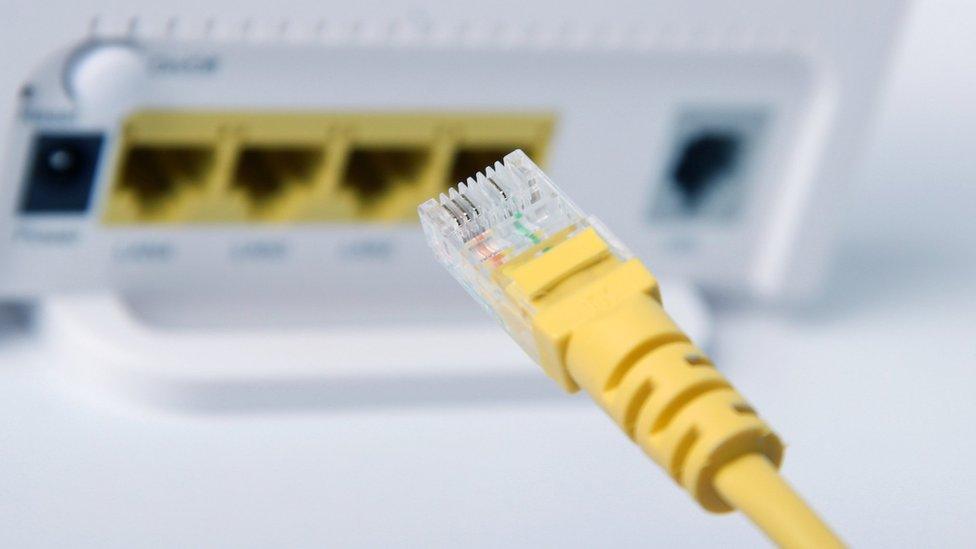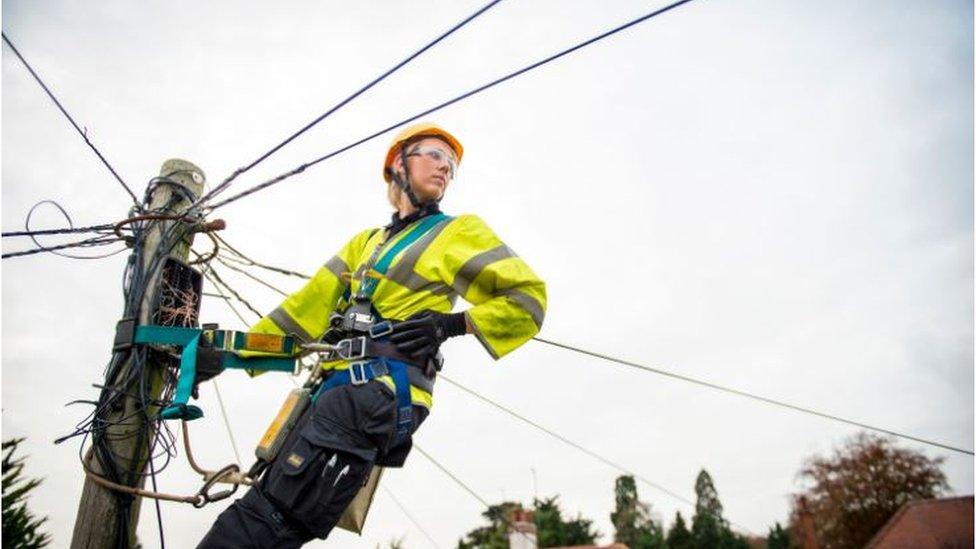Full-fibre broadband to reach more of the UK
- Published
- comments

Heavy-duty tools are speeding up the process of bringing faster digital services to rural areas
Openreach, the BT-owned operator of Britain's biggest broadband network, has announced plans to start rolling out ultrafast full-fibre broadband to 227 rural communities across the UK.
Building work is set to commence in villages, market towns, and rural areas in the next 14 months, Openreach said, external
Some 250,000 homes and businesses should benefit.
The UK lags behind many other EU countries when it comes to broadband coverage.
Last September, telecoms watchdog Ofcom said 8% of all UK premises were connected to full-fibre broadband.
Full-fibre has the potential to offer much faster internet speeds than other alternatives.
New locations to be connected by Openreach include Aberdare in South Wales and Saxmundham in Suffolk.
Openreach is aiming to connect 15 million premises to full fibre broadband by the mid-2020s, but has warned it will only be able to do this with government help.
The broadband industry has called on the government to scrap taxes for connecting businesses to full-fibre broadband.
"Currently, the biggest missing piece of this puzzle, is getting an exemption from business rates on building fibre cables, which is critical for any fibre builder's long-term investment case," said Openreach chief executive Clive Selley.
Openreach has connected more than two million premises to full-fibre broadband and wants that figure to rise to four million by March 2021.
"We're now building at around 26,000 premises a week in over 100 locations - reaching a new home or business every 23 seconds That's up from 13,000 premises a week this time last year," said Mr Selley.
Other broadband infrastructure providers include Sky and Virgin Media.
Matthew Howett, founder of research firm Assembly, sympathised with Openreach's frustration over business rates.
"It's a barrier that the whole industry is behind removing," he said. "Currently in England the exemption only lasts for five years, and 10 years in Scotland, but for the operators, the business case for rolling out fibre is over a much longer period, often over 15 years."
He also acknowledged that "broadband, while digital, can still be a very analogue and labour-intensive job to install".
"As much as 70% of the cost of rolling out broadband is in the civil works - the digging, manual labour and road closures that go with it. So, any innovations that reduce these costs will ultimately result in broadband being deployed faster, and to more people."
Openreach said it is using a range of tools, including ditch diggers and diamond cutters, to speed up the roll-out.
Laying fibre can be disruptive, slow and expensive, so labour-saving devices can play an important role, it said.
Tools helping to speed up the job include:
Diamond cutter - a giant rotating blade with diamonds embedded in the metal coating means it can slice through roads and pavements, leaving a neat channel into which feed fibre-optic cables can be fed
Ditch witch - a blade carves a narrow trench, eliminating the need to dig manually
Ground-penetrating radar - pulses of high frequency radio waves are sent through the ground
The tools and techniques are not particularly new, according to Andrew Ferguson, editor of the thinkbroadband website.
"Openreach has been talking about and using some of these techniques for a while now, but with the expansion to more areas, no doubt there will be more use of these techniques," he said.
"It is important to point out that, where at all possible, existing ducts and poles are used. The three techniques mentioned have also been used by other full-fibre operators across the UK previously."
Broadband choices
There are three main types of broadband connection that link the local telephone exchange to your home or office:
ADSL (asymmetric digital subscriber line) uses copper cables to a street-level cabinet or junction box and on to the house
FTTC (fibre to the cabinet) uses a faster fibre-optic cable to the cabinet, but then copper cable from there to the house
FTTP (fibre to the premises or full-fibre) uses a fibre-optic cable to connect to households without using any copper cable

- Published9 January 2020

- Published20 December 2019

- Published10 October 2019
